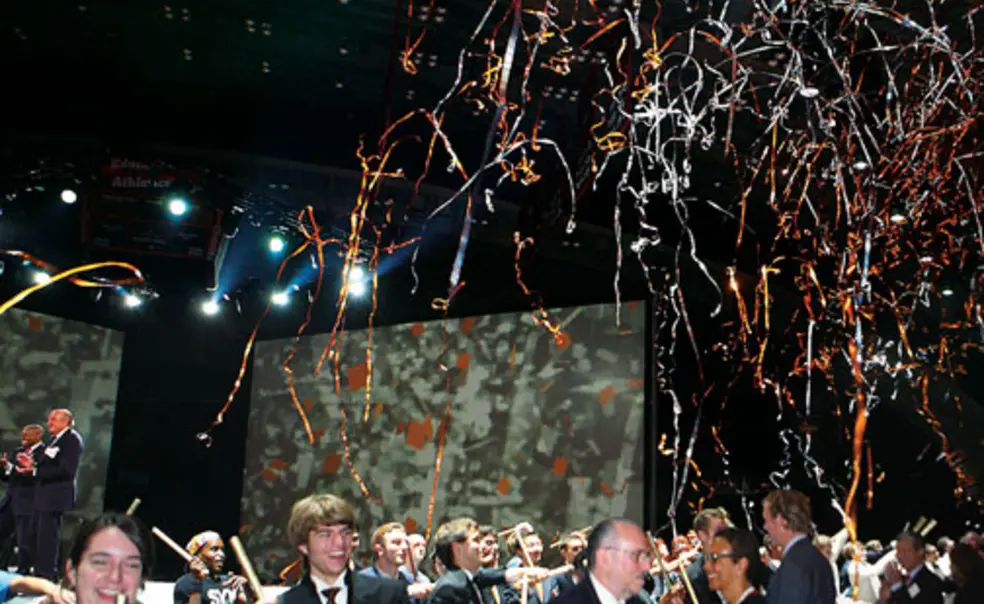A spectacular thank-you
After volunteers and donors worked to raise $1.88 billion during the five-year Aspire fundraising campaign, it was the University’s turn Oct. 19 to say thanks. More than 1,000 people filled Jadwin Gym, transformed into a gala reception hall with rows upon rows of long, festive tables — and streamers, above, thrown into the air.
Along with performances that ranged from the high-brow (professional dancers Silas Riener ’06 and Sydney Schiff ’10) to the much-lower-brow (Triangle kick line in drag), alumni heard testimonials about how their money was being used for financial aid and research, among other things. They viewed massive video screens to witness a brain scan taking place at that moment — an example of work at the Neuroscience Institute — and heard bridge-year students express thanks.
“Here’s to all of you,” Nancy Peretsman ’76, who co-chaired the campaign with Robert Murley ’72, toasted the guests. She and Murley then presented a black box tied with orange ribbon. Inside: a thousand pages with the names of 65,120 donors.
Alan Blinder ’67, professor of economics and public affairs: “Until we get over this notion that if it’s spent on the government it’s a bad thing — whether you’re talking about roads and bridges or talking about education — I don’t see a way out of America’s economic problems.”
Ramesh Ponnuru ’95, senior editor of National Review magazine: “The search for the real man is a mistake for [the public in considering] most of these politicians. It’s much more important to look at the forces that are acting on them.”
Todd Purdum ’82, national editor of Vanity Fair: “Fifty to 55 years ago, political scientists felt that the government of the United States was too unified, which meant that there wasn’t enough partisan conflict. I don’t think anyone would argue that now.”
George Shultz ’42, economist and former secretary of state: “About five years ago, I put solar panels on my house at Stanford. ... By this time, I’ve saved enough to pay for the cost of those panels. In another year I’ll pay for the opportunity cost of the money. I now also drive an electric car. So I say, ‘I’m driving on sunshine!’”
Emily Carter, professor and director of the Andlinger Center for Energy and the Environment: “For electricity, it’s incredibly important to continue our investments in fusion. ... Solar and wind are both intermittent sources of electricity – you don’t get electricity when the sun doesn’t shine and the wind doesn’t blow – but fusion can work continuously.”
Eric Schmidt ’76, Google executive chairman: “What is the No. 1 use of bandwidth today? Email, video, G-chat? It’s Netflix! ... When we built the Internet, we thought it would be used for educational purposes. But we got it wrong. It’s for watching movies!”













No responses yet